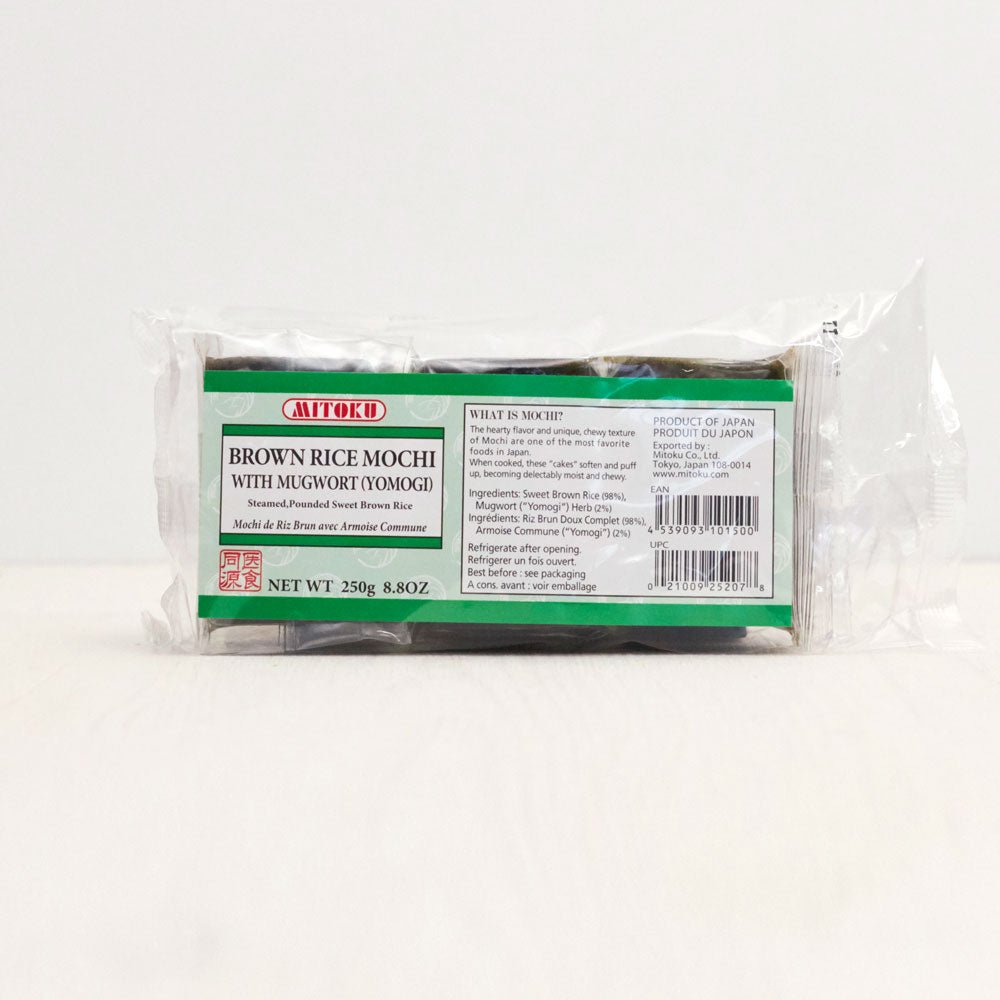A hearty flavoured and unique, chewy gluten-free treat; a natural favourite in Japan. Mochi is made by pounding a sticky rice known as sweet rice, it comes as a hard block which when cooked, goes golden and crispy on the outside and soft and sticky on the inside. Clearspring mochi can be found either with 100% brown rice or be made with added mugwort ("Yomogi" herb), a wild Japanese herb and that gives a deep, earthy and very savoury flavour.
Traditional and conventional Mochi
Made the traditional way, whole sweet rice is soaked, steamed, and pounded. It’s then allowed to dry until firm enough to slice. Although mochi is still hand-pounded by Japanese home-cooks for special occasions like New Year, most of the bright white mochi found in Japanese supermarkets is made from highly refined sweet rice squeezed through a modern industrial food processor.
Pounding sweet rice is backbreaking work, but mochi produced this way tastes far better than the industrial version. What's more, some traditionalists feel factory-extruded mochi lacks the healing qualities of the traditional pounded variety.
The history and traditions of Mochi
The exact origin of moshi is unknown although as early as the tenth century various kinds of mochi were used as imperial offerings at religious ceremonies. One of the theories regarding the name is that mochi comes from the verb ‘ motsu’ meaning ‘to have or to hold’ signifying that it is food given by the gods.
In Japan mochi is traditionally made from whole rice in a labour intensive ceremony called mochitsuki. While now enjoyed all year-round, mochi is a traditional food specially prepared and eaten during New Years celebrations in Japan. After the polished glutinous rice is soaked overnight and steamed it is pounded with wooden mallets (kine) in a traditional mortar (usu). Two people will alternate the work, one pounding and the other turning and wetting the mochi. They must keep a steady rhythm to prevent injuring each other with the heavy kine. The sticky mass is then formed into cubes and dried.
A match box sized piece of mochi has the same calorific value as a whole bowl of rice. For this reason it is popular with Japanese farmers who often eat mochi on cold winter days to increase their stamina while samurai took mochi onto the battlefield because it was easy to carry, easy to prepare and a great source of energy.
Cooking with Mochi
Mochi is supremely versatile, easy to cook and generally served as the main ingredient of a meal. Traditionally, it is included in the first meal of the Japanese New Year, usually in soup or stew, as it symbolises longevity and wealth.
It can be baked, grilled, pan-fried, or deep-fried. When cooked, it puffs up to nearly double its original size, developing a crisp crust outside and a soft, melting interior. If cooked too long, the surface cracks and the soft part inside oozes out. So, while cooking, watch carefully!
Baked or grilled mochi:
They are often eaten with a sweet miso topping. Baked mochi can also be cut into bite-sized pieces and added to soups during the last minute of cooking.
Pan or deep-fried mochi:
They don’t need anything more than a squirt of soya sauce or a soya sauce and fresh ginger dip.
Other ways of cooking:
Mochi can also be rolled in rice syrup, then coated with ground walnuts and eaten as dessert.
Mochi as a snack
Naturally filling and slightly sweet, this rice food is also great on its own as a snack. For the ultimate quick and easy snack, shallow frying a couple of pieces of mochi, then rolling the hot and squidgy rectangles in toasted nori smeared with grated ginger, tamari, tekka and wasabi... Heaven and whole grain!


 Vegan
Vegan